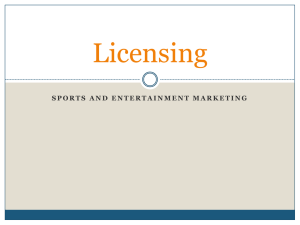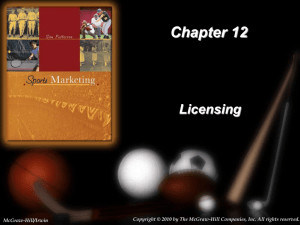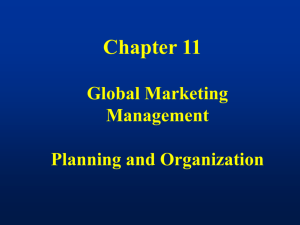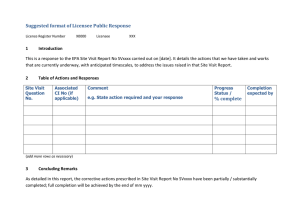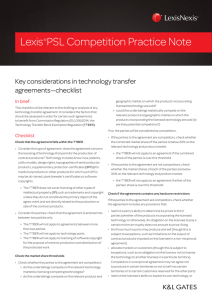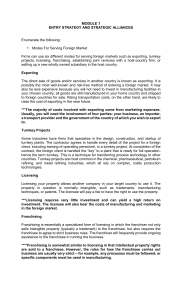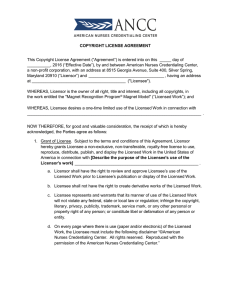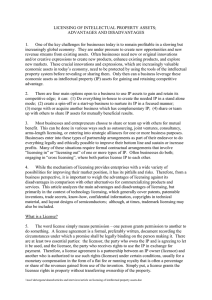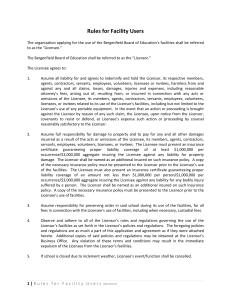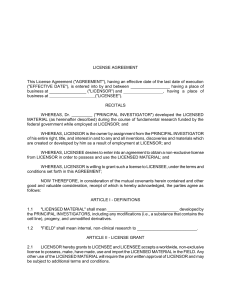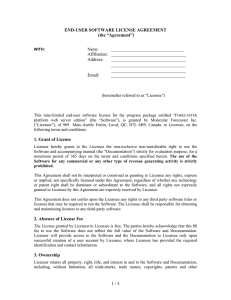Licensing S P O R T S A N...
advertisement
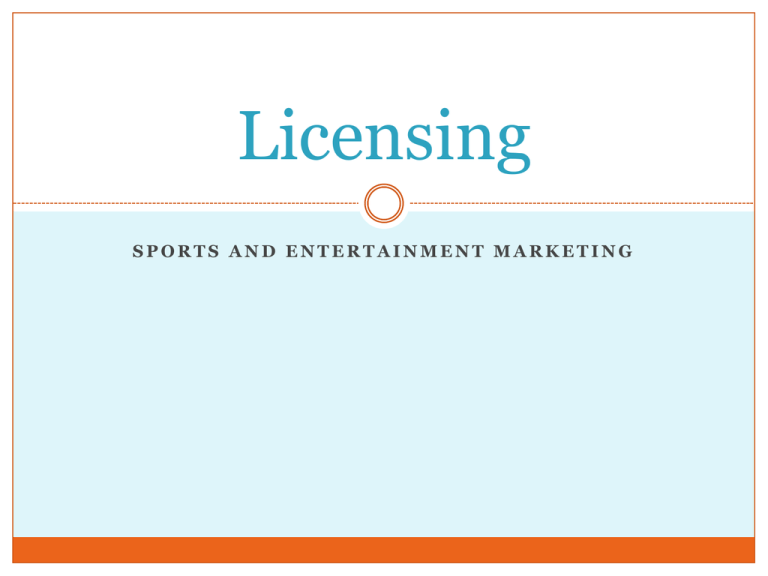
Licensing SPORTS AND ENTERTAINMENT MARKETING What is licensing? A legal agreement that allows a company the right to use another’s brand name, patent, or other intellectual property for a royalty fee Why is Licensing Important Licensing generates income for sports organizations and entertainment events Offers companies additional access to their target markets Licensing is NOT: Branding: Branded items do not use another company’s trademark Sponsorship: When a company pays to affiliate itself with a team or event Endorsement: A company pays an athlete or team to promote its products by wearing or using them Licensors Licensor: the company that holds the rights to trademarked property Examples: The NFL Virginia Tech Pittsburgh Penguins Licensors Types of SEM Licensors: Sports Leagues Individual Teams Individual Athletes Entertainment Companies Individual Entertainers Licensees Licensees: The company that wants to manufacture and sell products using trademarked property Examples: Clothing (Reebok, Nike) Video Games (EA Sports, 2K) Who is the Licensor? Licensee? Licensor: Minnesota Twins Licensee: Watch Manufacturer Who is the Licensor? Licensee? Licensor: NBA Kobe Bryant Licensee: 2K Sports Who is the Licensor? Licensee? Licensor: Kentucky Wildcats Licensee: Nike Nike is licensed (given permission to sell”) items containing the Kentucky logo. Licensed Products Example ANYTHING can be licensed Key chains, banners, furniture, jewelry Clothing = 60% of all licensed sport merchandise sales T-Shirts are the most popular item of all How Do Licensors Get Paid? Guarantees: The fee a licensee pays up front to use the trademarked property Based on Expected Sales Royalties Percentage of the actual sales Licensor Advantages Disadvantages Increased profits with marketing process little extra work Low Risk Free advertising Build brand awareness Loss of control over Inability to: guarantee quality control prices control where merchandise is sold Protecting Property Trademark Without a trademark, anyone could use your logo and profit from it With a trademark, they are charged to use your logo Protecting Property Trade Dress Refers to visual characteristics of a product or its packaging Includes Color schemes Textures Design, shape and placement of words, graphics and decoration Trademark Infringement The reproduction, copying, or counterfeiting of a registered mark There is up to $1 Billion worth of counterfeit products each year Class Activity Students are to complete the Harry Potter Licensing Activity
